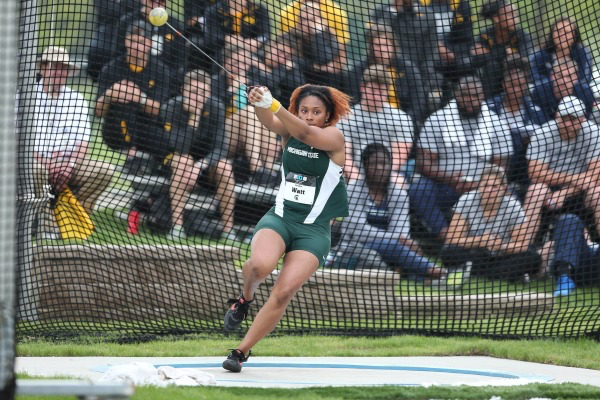The Big Mo, Force and Momentum
Example 9: the hammer throw.
The Question: The Hammer Throw is an ancient track and field event. For men, a 16 lb ball (7.3 kg) is attached to a chain that’s approximately 4 ft long (1.22 m) and whirled around a circle and let go. Olympic-class hammer throwers spin their bodies incredibly fast — in their last “wind” before release they are spinning less than a second per revolution. Let’s call it 0.3 seconds. The figure shows a collegiate hammer champion at work.

Calculate how fast the ball is moving at that rotational rate.
The Answer:
Let’s attack this strategically by collecting what we know and what we need to know. Here’s what we know:
- We know how long it takes to make a revolution.
- We know how long the chain is, the radius.
In order to calculate how fast the hammer is traveling around its arc, we know how long it takes to make a complete revolution and we know how far it goes in one revolution is the circumference, C, of that circular path.
The circumference is:
So the speed is:
(This is about what the measured “escape velocity” is for world-class throwers, who can toss the hammer more than 80 m. Mr Google will quickly tell you that this is about 60 mph.)
Now at that speed, the centripetal force required must be pretty impressive.